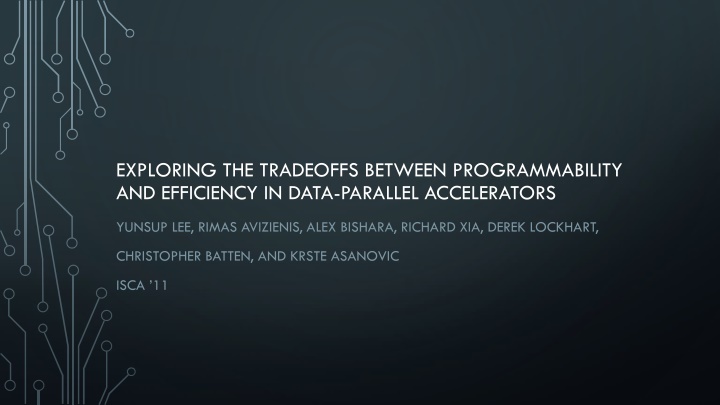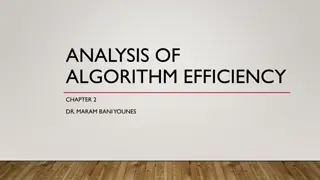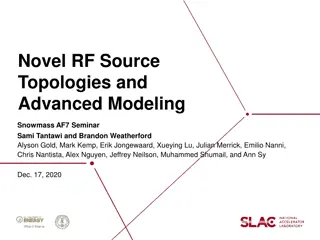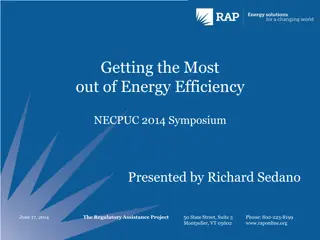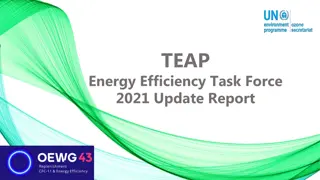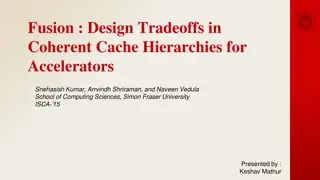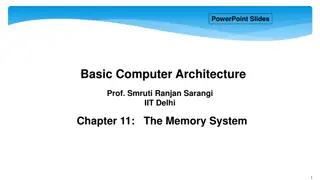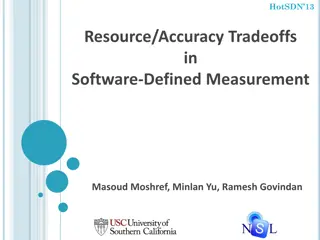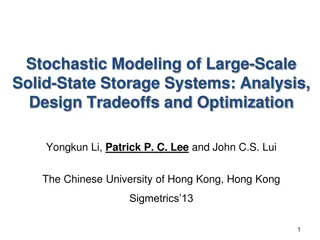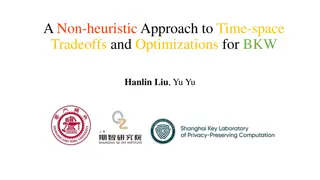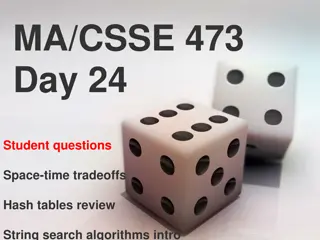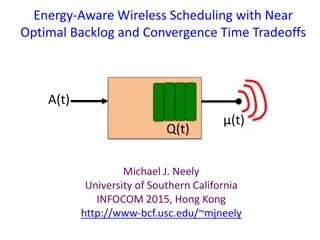Tradeoffs in Programmmability and Efficiency
In a study on data-parallel accelerators, the tradeoffs between programmability and efficiency are analyzed through architectural patterns for DLP, VLSI layouts, and performance evaluations.
Download Presentation

Please find below an Image/Link to download the presentation.
The content on the website is provided AS IS for your information and personal use only. It may not be sold, licensed, or shared on other websites without obtaining consent from the author.If you encounter any issues during the download, it is possible that the publisher has removed the file from their server.
You are allowed to download the files provided on this website for personal or commercial use, subject to the condition that they are used lawfully. All files are the property of their respective owners.
The content on the website is provided AS IS for your information and personal use only. It may not be sold, licensed, or shared on other websites without obtaining consent from the author.
E N D
Presentation Transcript
EXPLORING THE TRADEOFFS BETWEEN PROGRAMMABILITY AND EFFICIENCY IN DATA-PARALLEL ACCELERATORS YUNSUP LEE, RIMAS AVIZIENIS, ALEX BISHARA, RICHARD XIA, DEREK LOCKHART, CHRISTOPHER BATTEN, AND KRSTE ASANOVIC ISCA 11
MOTIVATION Need for data-parallelism in various applications Trend of offloading DLP tasks to accelerators Capability to handle wider variety of DLP Need for programmability Tradeoff with implementation efficiency
IN THIS PAPER Study of five Architectural patterns for DLP Present a parametrized synthesizable RTL implementation Evaluation for VLSI layouts of Micro-architectural patterns Evaluation of area, energy & performance
FOR REGULAR & IRREGULAR DLP MIMD Vector-SIMD Subword-SIMD SIMT VT
MIMD Multiple cores scalar or multi-threaded Single Host thread(HT) interacts with OS, manages accelerator Several Micro-threads(uT) Easy Programmability More area & lower efficiency
VECTOR-SIMD Multiple vector processing elements Control Threads(CTs) Each CT has several uTs in lock-step Straightforward for regular DLP CP executes redundant insts once, CP VIU amortize overhead, VMU efficient large blocks Complex irregular DLP may need vectored flags and arithmetic
SUBWORD-SIMD Vector-like with scalar wide datapaths Fixed-length unlike vector-SIMD, alignment constraints for memory Limited support for irregular DLP
SIMT No CTs, HT manages uTs Executes multiple scalar ops Execute redundant instructions, multiple scalar accesses, per uT stripmining calculations Simple to map data-dependent control flow, generates masks to disable inactive uTs
VT Executes efficient vector memory instructions Issues vector-fetch instructions to indicate start of scalar stream for uT execution uTs execute in a SIMD manner Vector-fetched scalar branch can cause divergence
MICRO-ARCHITECTURAL COMPONENTS Library of parametrized synthesizable RTL components Long latency functional units int mul,div & single precision float add, mul, div and sqrt Scalar integer core RISC ISA, can be multi-threaded Vector lane unified 6r3w port regfile(dynamically reconfigurable), 2 VAUs(int ALU + long latency FU), VLU, VSU & VGU Vector Memory unit coordinates data movement between memory and vector regfile Vector Issue unit fetches instructions, handles control flow, differentiates vector-SIMD & VT Blocking & non-blocking $
TILES MIMD scalar int core with int & FP long-latency FUs, 1-8 uTs per core Vector single-threaded scalar int core, VIU, vector lanes, VMU, shared long-latency FUs Multi-core tiles 4 MIMD or 4 single-lane vector cores Multi-lane tiles single CP with 4 lane vector unit Each tile shared 64KB 4-bank D$, request & response arbiters & crossbars, CP-16KB I$ & VT VIU-2KB vector I$
OPTIMIZATIONS Banked vector regfile 4 banks 2r1w-port regfile Per bank int ALUs - Density-time execution compresses vector fragment, active uTs only Dynamic fragment convergence dynamically merge fragments in PVFB if PCs match [1-stack(single stack) & 2-stack(current & future)] Dynamic memory coalescer Multilane VTs, attempts at satisfying multiple uT accesses through the same wide memory access(128bit)
HARDWARE TOOLFLOW Use a Synopsys-based ASIC toolflow for simulation, synthesis & PAR Power estimation using IC compiler & PrimeTime benchmarks Only gate-level energy results used DesignWare components with register retiming Use CACTI to model SRAMs and cache
TILE CONFIGS 22 tile configs explored Vector length capped at 32 some structures scale quadratically in area
MICROBENCHMARKS & APP KERNELS Microbenchmarks - vvad[1000 element FP add], bsearch[1000 array lookups] Kernels - Viterbi[regular DLP], rsort, kmeans, dither[irregular mem access], physics & strsearch[irregular DLP]
PROGRAMMING METHODOLOGY Code for HT, explicitly annotate data- parallel tasks for uTs Develop an explicit-DLP programming environment Modified GNU C++ library for unified ISA for CT and uTs Develop VT library
MICRO-ARCHITECTURAL TRADEOFFS Impact of additional physical registers per core Impact of regfile banking and per bank int ALUs
IMPACT OF DENSITY-TIME EXECUTION, DYNAMIC FRAGMENT CONVERGENCE & MEMORY COALESCING
APPLICATION KERNEL RESULTS Adding more uTs to MIMD ineffective Vector-based machines faster and more efficient compared to MIMD, area reduces relative advantage VT is more efficient than vector-SIMD for both multi-core and multi-lane Multi-lane vector designs more efficient compared to multi-core designs Single-core multi-lane VT with 2-stack PVFB, banked regfile and per bank int ALUs good starting point for Maven
CONCLUSIONS Data-parallel accelerators must be capable of handling a broader range of DLP Vector-based micro-architectures are more area and energy efficient compared to scalar micro-architectures Maven, VT micro-architecture based on vector-SIMD, more efficient and easier to program
LOOKING AHEAD More detailed comparison of VT with SIMT Improvements in programming vector-SIMD ? Hybrid machines with pure MIMD & pure SIMD more efficient for irregular DLP ?
COUPLE OF THINGS MISSING Effect of inter-tile interconnect and memory system Comparison with similar VT micro-architectures eg. Scale VT ANYTHING ELSE ?
